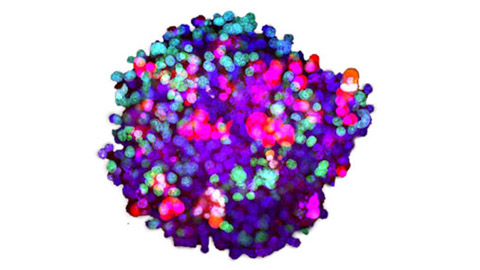Organoids and spheroids can more faithfully reproduce in vivo conditions than standard 2D cell cultures, and imaging-based analysis can monitor cell-specific responses with high spatial resolution. Therefore, we have been developing imaging-based three-dimensional analysis and drug evaluation methods using patient-derived cancer organoids and spheroids.
In this webinar, we will present some examples of applications within recent trends in organoid research.
FAQWebinar FAQs | 3D High-Throughput Image Analysis of PDOs and SpheroidsWhat sets NoviSight™ software apart from other 3D imaging analysis software?While other image analysis software may have a graphical user interface and recognize complex 3D structures, NoviSight software is unique for its high-throughput 3D image analysis and intuitive object classification. For instance, NoviSight software is ideal for performing a high-throughput analysis of spheroids and other 3D objects in microplate-based experiments. Can NoviSight software be used for other 3D imaging applications?In addition to analysis of organoids and spheroids, NoviSight software can perform measurements based on basic object recognition and classifaction for a range of applications. For example, you can quantify the region expressing a specific gene in 3D organs. However, NoviSight software does not have a module for recognizing filament structures, such as dendrites, so it cannot be used to analyze these objects. Can NoviSight software be used to analyze 2D objects?Yes, of course. You can measure 2D objects using general object recognition and classification. If you plan to do only 2D analysis, cellSens™ software may be more suitable because it is optimized for 2D analysis. However, if you want to analyze both 2D and 3D objects, NoviSight software is the ideal choice. Can NoviSight software be used with widefield microscopy?3D data acquired with the widefield systems is unsuitable for analysis, as images do not have a high enough resolution. We recommend you use cellSens software to employ the deconvolution process. Does optical clearing cause tissue shrinkage?Sometimes the sample shrinks or expands when using a transparent clearing reagent. However, in our experience, the SCALEVIEW-S4 tissue clearing reagent is suitable for organoids and spheroids, and there is no expansion or shrinking. How much time does it take to count the number of cells in a spheroid?It takes 10 minutes or less to count the number of cells in a spheroid. Does NoviSight software include deep-learning technology?Our TruAI™ deep-learning technology is available in both cellSens software and the scanR high-content screening station but is not available in NoviSight software. Is a free trial available for NoviSight software?To try the software for free, contact your local representative to receive a trial version. |

.jpg?rev=8603)

